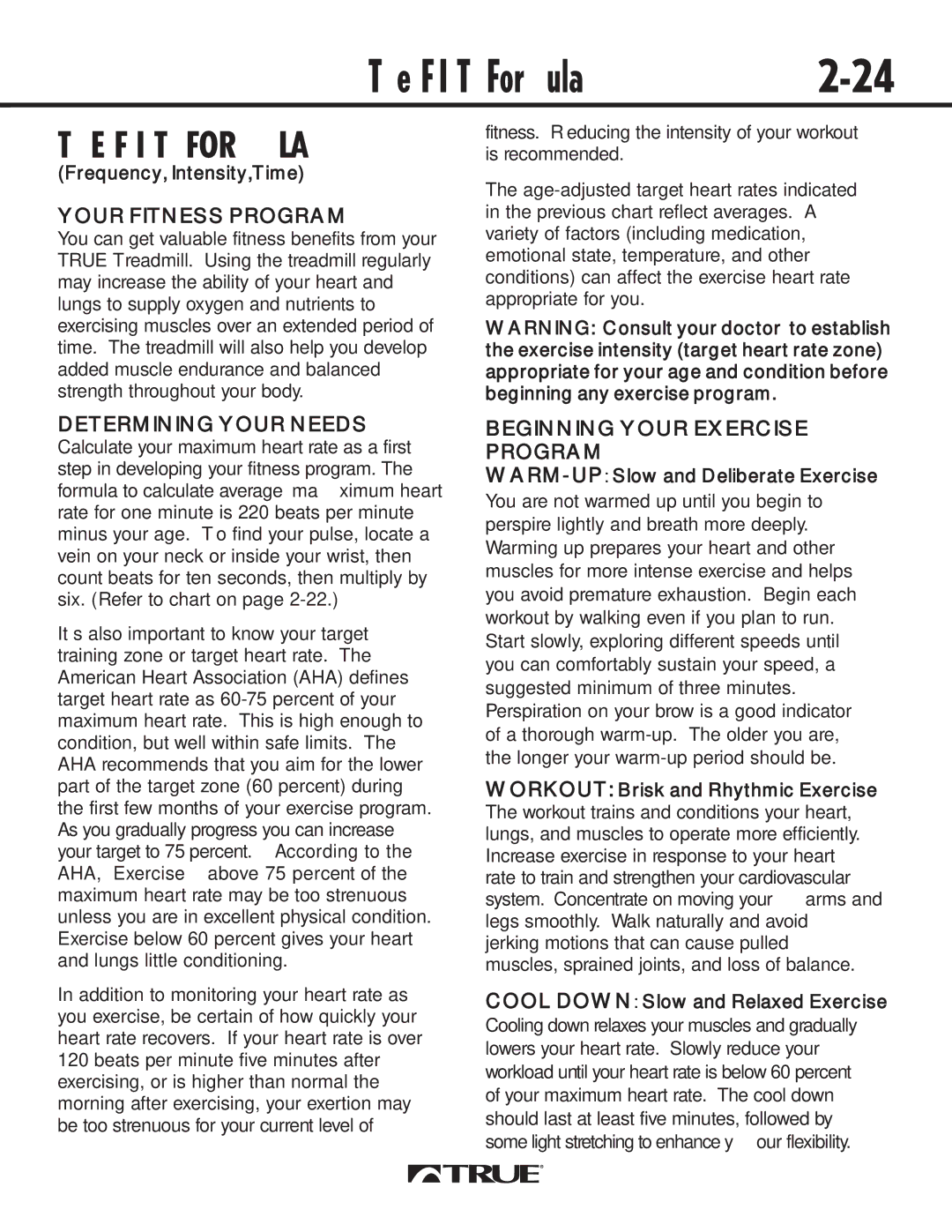540 specifications
The True Fitness 540 is an advanced treadmill designed for both fitness enthusiasts and those seeking a reliable machine for home workouts. This model integrates innovative technology with user-centric features, creating an exercise experience that is both effective and enjoyable.One of the standout features of the True Fitness 540 is its durable construction, ensuring longevity and stability during workouts. The treadmill boasts a commercial-grade frame, making it capable of handling rigorous daily use. Additionally, the running surface measures a generous 20 inches wide and 60 inches long, providing ample space for users of all sizes to run or walk comfortably.
In terms of technology, the True Fitness 540 is equipped with a powerful 3.0 HP motor that delivers quiet yet efficient performance. This motor allows for a maximum speed of 12 mph, catering to runners and those looking to intensify their training sessions. Furthermore, the treadmill’s incline feature offers a vertical range of up to 15%, promoting a more challenging workout by simulating hilly terrains.
The True Fitness 540's console is another notable aspect, featuring a vibrant LCD display that tracks essential workout metrics such as time, distance, calories burned, pace, and heart rate. Integrated heart rate monitoring is available via grips on the handlebars, or users can connect to a chest strap for more accurate readings. This allows for better tracking of fitness goals and overall health.
This treadmill offers numerous built-in workout programs, ranging from interval training to heart rate control, making it versatile for all fitness levels. Users can also customize their workouts to meet specific goals, ensuring that their routines remain engaging and effective.
To further enhance the workout experience, the True Fitness 540 includes Bluetooth connectivity. This feature allows users to sync their devices with fitness applications, providing an opportunity to track progress, set goals, and share achievements on social media. The treadmill’s cushioning system is designed to reduce impact on joints, making it an excellent choice for users who may have a history of injuries or those simply seeking a more comfortable cardio experience.
In summary, the True Fitness 540 stands out for its robust construction, advanced technology, and thoughtful design. With its powerful motor, adjustable incline, interactive console, and heart rate monitoring capabilities, this treadmill truly caters to a wide range of fitness enthusiasts, making it a valuable addition to any home gym.
